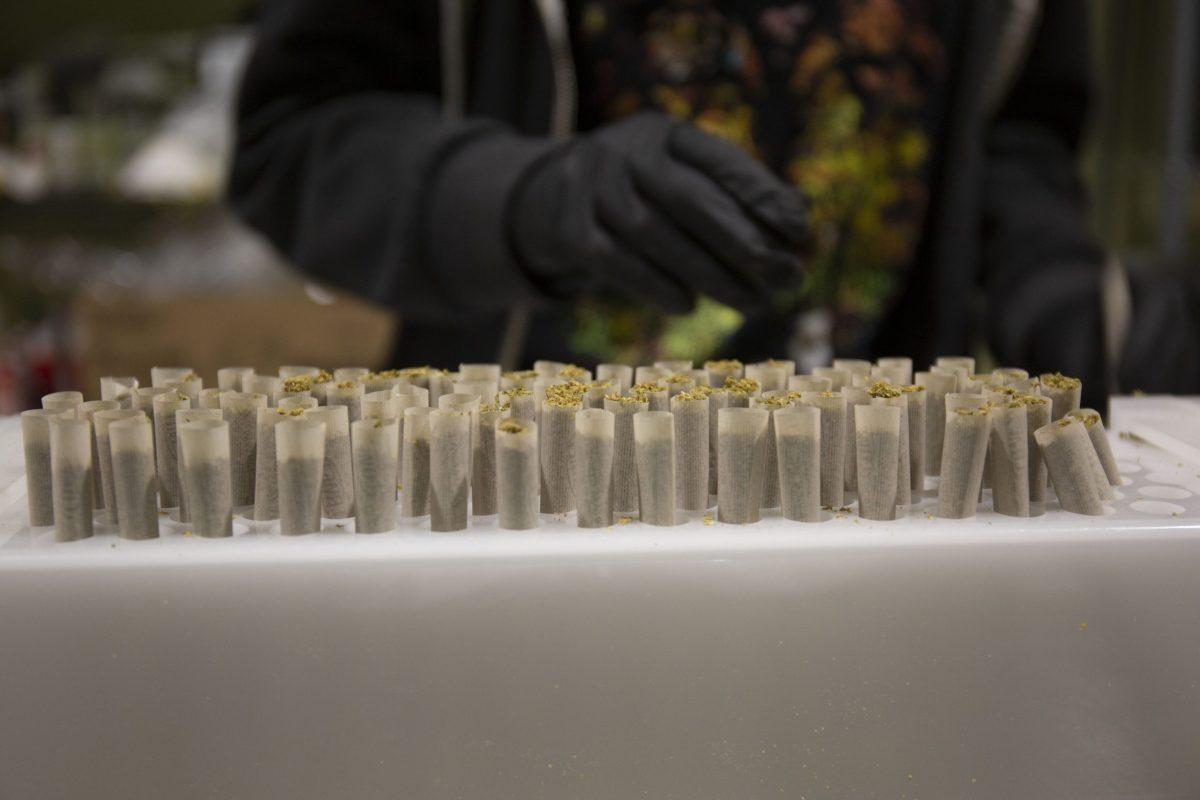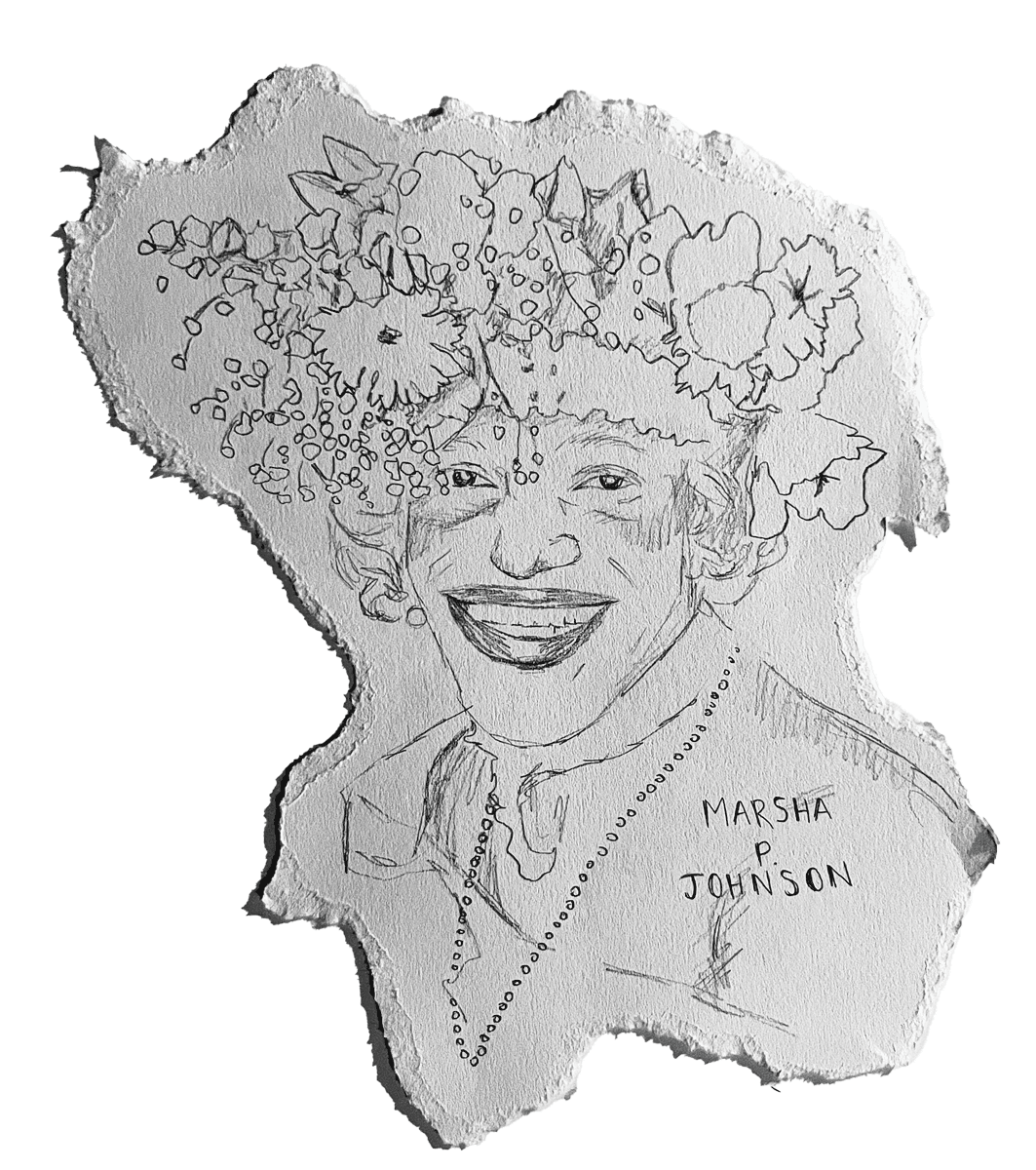Sift, jiggle, massage, tap, and twist— that’s the mantra ingrained into Skye Kirk when she’s rolling joints at SugarTop Buddery.
This technique is what allows Kirk to produce SugarTop’s signature 0.6 and 1.2 gram joints by the hundreds.
“I have rolled about half a million joints in a span of three years,” Kirk said.
Recently, Kirk graduated from the American College of Healthcare Sciences with a degree in complementary alternative medicines with a focus in herbalism.
”I’m very passionate about medical marijuana and I understand the difference between recreating with it and using it medicinally.”
Her passion for medical marijuana and other herbs has earned her the title of Clone Master at SugarTop. Clones are immature marijuana plants that are a genetic replica of their parent plant. Strains that grow and sell well often get cloned by growers in order to get consistent results every harvest. As Clone Master, Kirk’s work involves checking on plants and root systems, saving plant genetics and transplanting clones.
While they may be similar in size to a young marijuana plant, clones are often taken from cuttings of mature plants, not seeds.
SugarTop fertilizes, grows and harvests on a strict schedule. At SugarTop’s indoor grow operation, baby clones cycle through rooms with different light intensities and schedules to facilitate growth. First they are placed in the vegetation room to grow in size, and then they are moved to the flower room where the light encourages flower growth, or “budding,” in order to produce the smokable buds found on the market.
When the flower room is harvested, the plants in the vegetation room are cycled into the now-empty flower room. This rotation keeps SugarTop in a consistent cycle of growth and harvest.
To earn extra cash on the side, Kirk also trims for SugarTop come harvest season.
Trimming is one of the final steps to prepare marijuana for consumption. When marijuana is harvested there are larger leaves– the iconic marijuana leaf– that surround the bud and hide the frosty flower from sight. Trimmers go through pounds of harvested marijuana with a small pair of scissors and a large amount of patience to shape and manicure the buds that are eventually consumed.
At 28, Kirk is the youngest trimmer in a room of 10 to 15 tight knit friends and seasoned trimmers at SugarTop, but that doesn’t bother her one bit. The atmosphere of trim days at SugarTop can turn a long work day into an opportunity to talk and socialize.
“It’s always my favorite because we get lots of snacks —lots of cookies and chips and vegetables,” laughed, Kirk. “We’ve decided not to call [them] trim days; we call it snack day just to keep in good moods.”
Trimmers usually work eight hour days and are often hunched over carefully analyzing marijuana nug by nug. These long days can be physically and mentally exhausting.
Before recreational marijuana, trimmers would often get paid per pound. This means that small, sticky nugs that are hard to trim can cut into profit. After recreational marijuana created a new market, many companies began paying employees hourly. The demands of the new, competitive industry make experience with trimming the number one priority for many employers.
Kirk began trimming when she was 22. She learned the techniques of a good trim from friends and family working as a trimmer for a small medical grow operation; those techniques helped her get a job at a medical dispensary.
She made $150 a pound at the dispensary, which was average at the time, but harvests were only every two months, so the job was inconsistent.
Now in the recreational marketplace, trimmers are required to have a marijuana handlers permit from the OLCC. The permit costs $100 and those seeking to work in the marijuana industry review education materials, take an online test and submit an application.
The state of Oregon allows trimmers to be paid hourly and taxes each paycheck; businesses are also allowed to offer an I-9 form to contract trimmers.
The I-9 form means trimmers are paid per pound and have to pay taxes at the end of the year, when they claim their revenue. An I-9 is typically more appetizing to experienced trimmers who work quickly.
“Some people can make $400 to $500 a day if they trim 3 to 4 pounds,” Kirk said. “You can still trim that 3 to 4 pounds in a day in recreational, but you may only get paid 12 dollars an hour.”
After recreational marijuana changed the industry in Oregon, Kirk began working for a local contract company that connects trimmers with dispensaries and grow operations that need help during harvest season.
Through the contracting company Kirk would get connected with growers to trim for large dispensaries. Sometimes contracts would take weeks and other times just a day.
In this new age of legalization, smelling like marijuana may be more indicative of a hard days work than a relaxing day at home.
“I remember getting done trimming one day and I got pulled over for having one headlight out, and I told the officer immediately, ‘I’m gonna smell like cannabis,’” Kirk laughed. “But he was very sweet because I had my permit and everything.”
Today, Kirk gets the best of both worlds at SugarTop Buddery with hourly wages and consistent work, but also the bonus of trimming SugarTop’s buds come harvest season.
“I think that recreational has made trimming not what it used to be,” Kirk says. “It allows [trimmers] to get into a different industry and have a stable income and I think it’s important to have stability.”
Kirk doesn’t plan on trimming for the rest of her life. In the future, she wants to be a medical consultant for marijuana and other herbs in order to bridge the gap between herbs and medicine.
Her passion for other herbs has brought her to volunteer as an Herbalist at Occupy Medical on Sundays.
According to Kirk, trimming was her way to support herself during school, learn more about the plant and enter the industry. A plan that may resonate with many people interested in entering the budding and competitive marijuana industry in Oregon today.
For now, Kirk will keep sifting, jiggling, massaging, tapping and twisting her joints at SugarTop Buddery.







